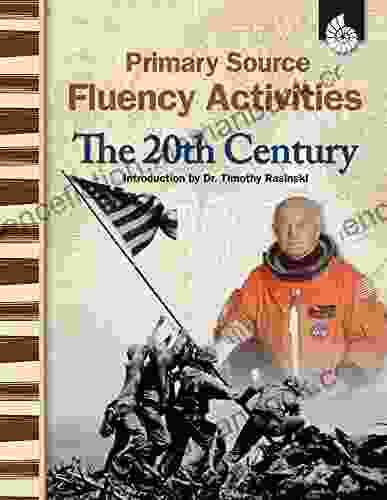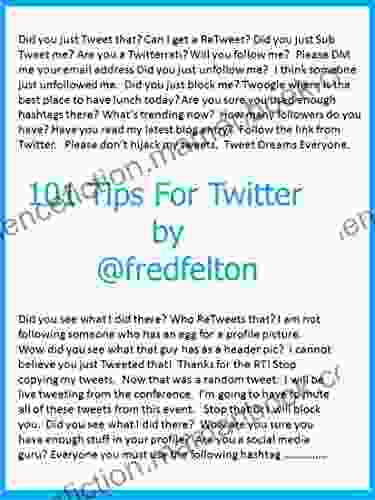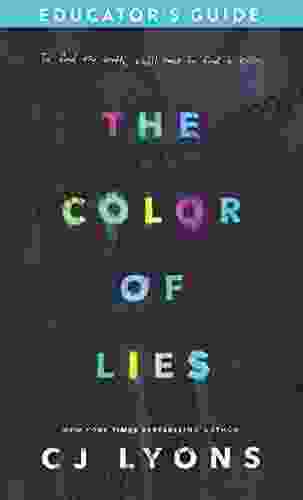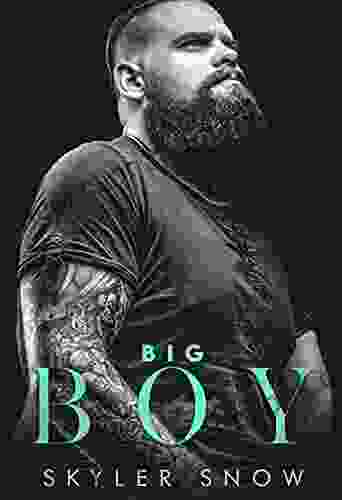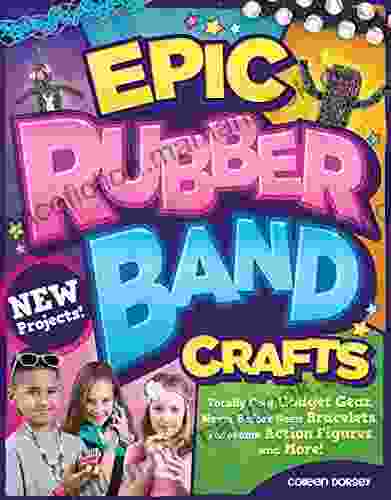Primary Source Fluency Activities by Ramona Ausubel

Primary source fluency activities are a valuable tool for educators looking to engage students in critical thinking, analysis, and interpretation of historical documents. These activities provide students with the opportunity to interact directly with primary sources, such as letters, diaries, speeches, and photographs, and to develop a deeper understanding of the past.
One of the key benefits of primary source fluency activities is that they allow students to develop their own interpretations of historical events. By examining primary sources firsthand, students can form their own s about the past and gain a more nuanced understanding of historical contexts. This process of interpretation is essential for developing critical thinking skills and fostering a deeper appreciation for history.
4.1 out of 5
| Language | : | English |
| File size | : | 2327 KB |
| Print length | : | 192 pages |
| Screen Reader | : | Supported |
In addition to developing their critical thinking skills, primary source fluency activities also help students to develop their reading comprehension and analytical skills. By working with primary sources, students learn to identify and extract key information, to analyze the author's purpose and perspective, and to evaluate the credibility of the source. These skills are essential for success in a variety of academic and professional settings.
There are many different types of primary source fluency activities that can be used in the classroom. One common activity is to have students read and analyze a primary source document, such as a letter, diary entry, or speech. Students can then answer questions about the document, such as who wrote it, when it was written, and what the author's purpose was. Another common activity is to have students compare and contrast two or more primary source documents. This activity helps students to identify similarities and differences between different sources and to develop a more comprehensive understanding of the historical context.
Primary source fluency activities can be used to teach a variety of historical topics. For example, teachers can use primary source documents to teach about the American Revolution, the Civil War, the Holocaust, and the Civil Rights Movement. These activities can help students to gain a deeper understanding of these important historical events and to develop their critical thinking and analytical skills.
Here are some specific examples of primary source fluency activities that can be used in the classroom:
- Have students read and analyze a letter written by a soldier during the American Revolution. Students can answer questions about the letter, such as who wrote it, when it was written, and what the author's purpose was. They can also analyze the author's language and tone to gain a better understanding of the author's perspective on the war.
- Have students compare and contrast two different speeches given by Abraham Lincoln during the Civil War. Students can identify similarities and differences between the two speeches and analyze the author's purpose and perspective in each speech. They can also evaluate the effectiveness of each speech in terms of its persuasiveness and impact on the audience.
- Have students read and analyze a diary entry written by a Holocaust survivor. Students can answer questions about the diary entry, such as who wrote it, when it was written, and what the author's purpose was. They can also analyze the author's language and tone to gain a better understanding of the author's experience during the Holocaust.
- Have students compare and contrast two different news articles about the Civil Rights Movement. Students can identify similarities and differences between the two articles and analyze the author's purpose and perspective in each article. They can also evaluate the credibility of each article based on the author's sources and evidence.
These are just a few examples of the many different types of primary source fluency activities that can be used in the classroom. By incorporating primary source fluency activities into their instruction, teachers can help students to develop their critical thinking, analytical, and reading comprehension skills. These activities can also help students to gain a deeper understanding of historical events and to develop a more nuanced appreciation for history.
Additional Resources
- Teaching with Primary Sources from the Library of Congress
- Teaching with Documents from the National Archives
- Teaching Resources from the American Historical Association
4.1 out of 5
| Language | : | English |
| File size | : | 2327 KB |
| Print length | : | 192 pages |
| Screen Reader | : | Supported |
Do you want to contribute by writing guest posts on this blog?
Please contact us and send us a resume of previous articles that you have written.
 Top Book
Top Book Novel
Novel Fiction
Fiction Nonfiction
Nonfiction Literature
Literature Paperback
Paperback Hardcover
Hardcover E-book
E-book Audiobook
Audiobook Bestseller
Bestseller Classic
Classic Mystery
Mystery Thriller
Thriller Romance
Romance Fantasy
Fantasy Science Fiction
Science Fiction Biography
Biography Memoir
Memoir Autobiography
Autobiography Poetry
Poetry Drama
Drama Historical Fiction
Historical Fiction Self-help
Self-help Young Adult
Young Adult Childrens Books
Childrens Books Graphic Novel
Graphic Novel Anthology
Anthology Series
Series Encyclopedia
Encyclopedia Reference
Reference Guidebook
Guidebook Textbook
Textbook Workbook
Workbook Journal
Journal Diary
Diary Manuscript
Manuscript Folio
Folio Pulp Fiction
Pulp Fiction Short Stories
Short Stories Fairy Tales
Fairy Tales Fables
Fables Mythology
Mythology Philosophy
Philosophy Religion
Religion Spirituality
Spirituality Essays
Essays Critique
Critique Commentary
Commentary Glossary
Glossary Bibliography
Bibliography Index
Index Table of Contents
Table of Contents Preface
Preface Introduction
Introduction Foreword
Foreword Afterword
Afterword Appendices
Appendices Annotations
Annotations Footnotes
Footnotes Epilogue
Epilogue Prologue
Prologue Louise Sharland
Louise Sharland George Shetuni
George Shetuni Patrick C Harrison Iii
Patrick C Harrison Iii Grace M Jolliffe
Grace M Jolliffe Angelos Mavros
Angelos Mavros Ben Macintyre
Ben Macintyre Elisabeth Storrs
Elisabeth Storrs Richard Davies
Richard Davies Trevor Pacelli
Trevor Pacelli Jacqueline P Vincent
Jacqueline P Vincent Princess Bola Adelani
Princess Bola Adelani Angela Kubiak
Angela Kubiak Sandy Appleyard
Sandy Appleyard Leanne Betasamosake Simpson
Leanne Betasamosake Simpson Tony Prodger
Tony Prodger Eirik Westcoat
Eirik Westcoat Chris Wiltz
Chris Wiltz Angelee Deodhar
Angelee Deodhar Dean Jobb
Dean Jobb Hugh Brewster
Hugh Brewster
Light bulbAdvertise smarter! Our strategic ad space ensures maximum exposure. Reserve your spot today!
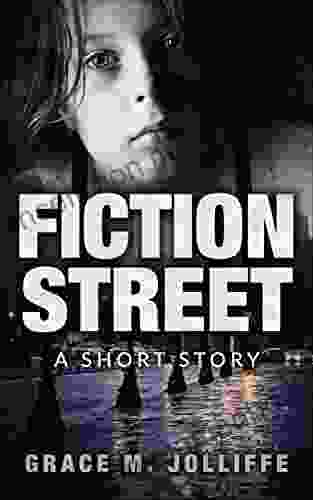
 Darren BlairStep into the Vibrant 1970s Liverpool of Fiction Street's Captivating Short...
Darren BlairStep into the Vibrant 1970s Liverpool of Fiction Street's Captivating Short... Edwin BlairFollow ·6.4k
Edwin BlairFollow ·6.4k Jeffrey HayesFollow ·11.8k
Jeffrey HayesFollow ·11.8k Juan ButlerFollow ·2.8k
Juan ButlerFollow ·2.8k Brett SimmonsFollow ·11.5k
Brett SimmonsFollow ·11.5k Ernesto SabatoFollow ·7.7k
Ernesto SabatoFollow ·7.7k Reed MitchellFollow ·11k
Reed MitchellFollow ·11k George MartinFollow ·9.2k
George MartinFollow ·9.2k Ethan MitchellFollow ·2.3k
Ethan MitchellFollow ·2.3k
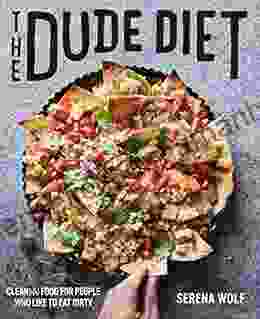
 Ashton Reed
Ashton ReedClean(ish) Food for People Who Like to Eat Dirty
By: [Your Name] Are...
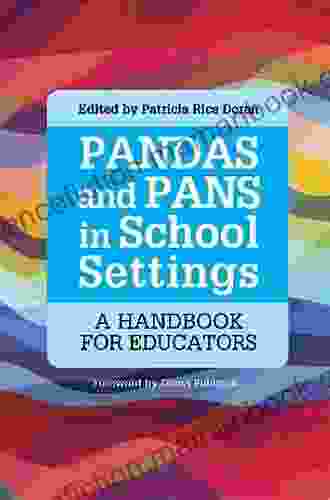
 Ronald Simmons
Ronald SimmonsThe Handbook for Educators: A Comprehensive Guide to...
The Handbook for...
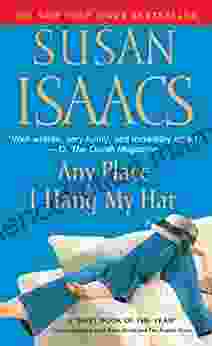
 Derrick Hughes
Derrick HughesAny Place Hang My Hat: A Hauntingly Beautiful Novel by...
A Masterpiece of...

 Adrien Blair
Adrien BlairFly Me to the Moon Vol. 5: A Lunar Odyssey through...
In the vast...

 William Powell
William PowellTips By Gardeners On Variety Of Subjects
Gardening...
4.1 out of 5
| Language | : | English |
| File size | : | 2327 KB |
| Print length | : | 192 pages |
| Screen Reader | : | Supported |


